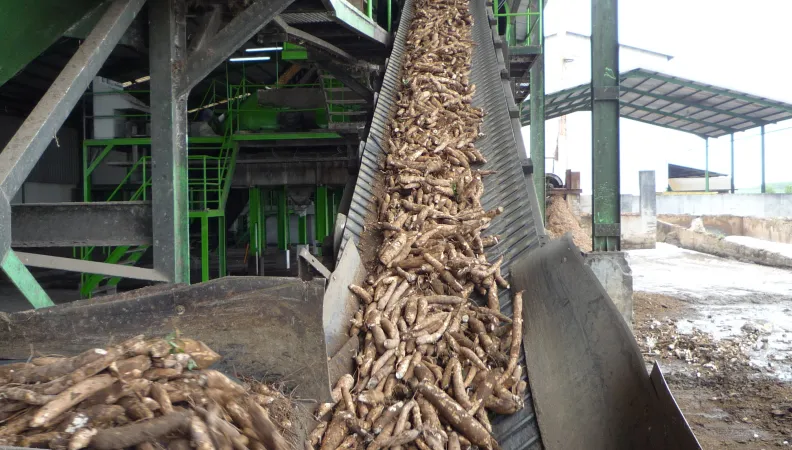Share the page
FISP Climat - HAMPARAN: Production of biogas from effluent and by-products of a cassava starch factory
Project


-
Project start date
-
Status
In progress
-
Estimated date of project termination
-
-
Project financing date
-
-
Financing duration
-
3 years
-
Type of program
-
FFEM
-
Global financing amount
-
5070000 €
-
FFEM financing amount
-
500000 €
-
Project lead member institution(s)
-
French Ministry of Economy and Finance
-
Country and region
-
Indonesia
-
Location
-
Jakarta
-
Type of financing
-
Grant
-
Partners
-
AFD
-
Beneficiaries
-
PT GREE ENERGY HAMPARAN (GEH)
-
Type of beneficiary
-
private sector
Demonstrating the efficiency of a technology that can create, in rural areas of developing countries, electricity, heat and biomethane fuel from a local and renewable source, while significantly contributing to the improvement of local and global environmental conditions. GREE enables organic waste to be used as an additional revenue stream for its agribusiness partner, avoiding the emission of over a million tonnes of CO2 over the next ten years.
Context
Simple things such as having access to water, keeping food fresh and doing homework after 6 pm are anything but simple for millions of people in Lampung, where HAMPARAN is based.
Industrial biogas has amply demonstrated its environmental benefits in South East Asia, but can scarcely be said to have become a genuine industrial sector.
By producing clean, readily available cheap electricity, HAMPARAN is contributing to economic development unshackled from non-renewable resources and the destruction of the environment.
Description
The biogas generated by the biological transformation of agribusiness by-products/waste is purified than given added value to produce a significant amount of clean, readily available cheap energy. The energy produced is come in three different forms:
- Electricity, produced by generators. Electricity production is fully exported to the regional grid in South Sumatra with a connection possible close to the site. This sale of electricity comes as part of the mandatory repurchase policy for green energy (biogas, biomass, small hydro and geothermal) in force in Indonesia since April 2012. This electricity production is reach 18.1 GWh throughout the year.
- Process heat, produced using a biogas boiler and by combined generation (recovery of heat lost from generators). Heat production is solded directly to the starch factory to cover its own energy needs relating to the extraction of starch from cassava roots. 24.7 GWh per year of thermal energy is therefore recovered on the site.
- Purified biogas – a product that is used as fuel for the starch factory emergency generators. Diesel is currently used as fuel for the emergency generators. Once the biogas production system is in place, the agribusiness is benefit from a reserve of fuel on-site. According to estimates, 4.7 GWh of biogas fuel is enable the partial replacement of diesel used by the emergency generators.
Outcomes
- Impact on the environment: Most agribusiness wastewater in South East Asia is processed in pools open to the elements. This results in powerful greenhouse gases. Biogas technology enables these gases to be recovered, destroyed and turned into clean energy. Reduction of 1,087,630 t of CO2 eq over 10 years – the equivalent of the annual emissions from 386,000 tourism vehicles (AFD CarbonFootprinting tool v2) .
- Impact on jobs and society: Aside from the jobs directly created by the HAMPARAN operation and construction, several thousand labour and farming jobs dependent upon the cassava plant is safeguarded.
- Impact on economic development: Energy is the second biggest cost item in starch processing, after purchasing cassava roots. By replacing fossil fuels with cheap biogas energy, the partner starch plant stands to significantly boost its competitiveness. Sharing the energy production yield is also greatly improve its economic performance.


